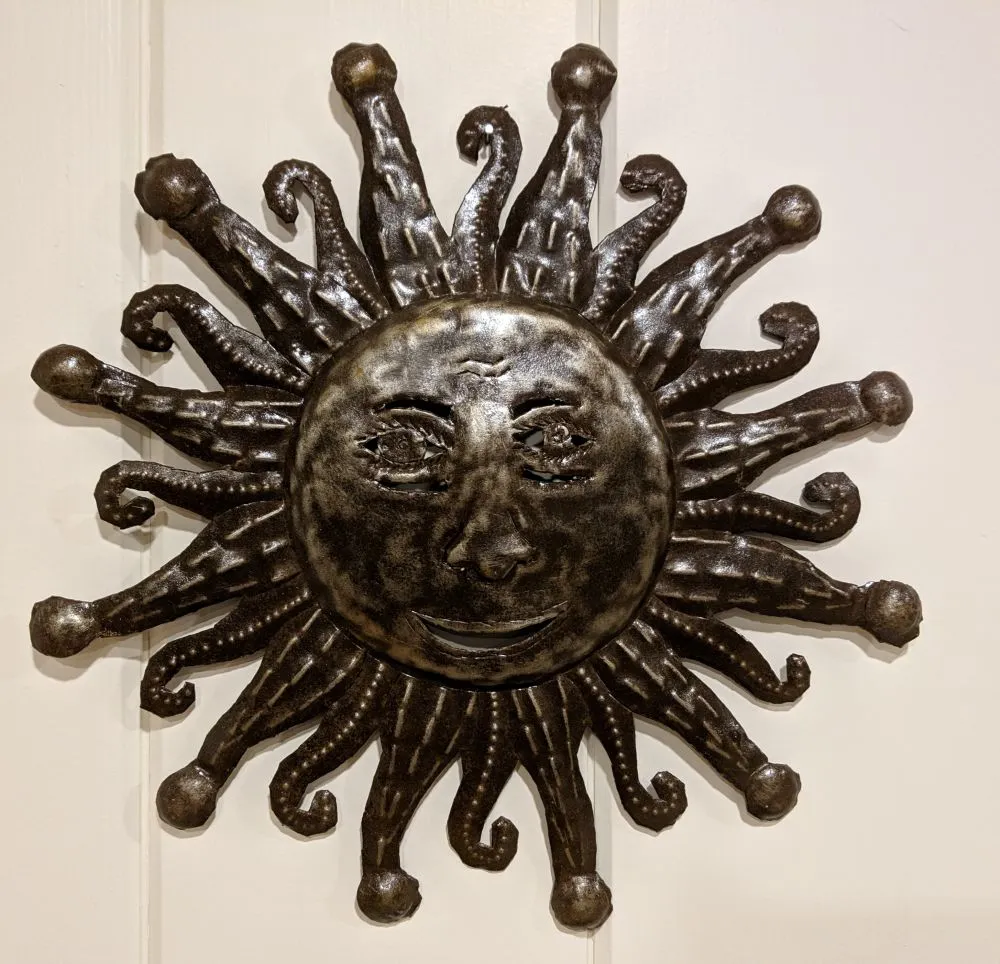“This temperature corresponds to 0 degrees Fahrenheit, so it was “probably a round, easy number to remember”
That’s what Allouche and team will be working on next, as they build their research summary into a full report, to be published in September 2024. “These findings give good reasons for ‘3 degrees of change’ to be further explored,” Allouche says.
Three Degrees Of Change: Frozen food in a Resilient and Sustainable Food System (PDF)
“We” as in multimillion dollar companies with 30 acre refrigeration centeres right? Since corps produce like what 70% of all emissions?
No. It’s like when toilets started getting smaller flushes. It doesn’t help on an individual basis, but as a whole it has an impact, even if it’s not a huge one.
deleted by creator
They’re probably already running at the optimum temperature. Power is their main input cost, and they’re strongly motivated to minimize it. Meanwhile the average household freezer is set to… Um… how about “7”. That sounds pretty cold to me, yeah?
You wouldn’t believe how much research has gone into studying things like the optimum way to store potatoes.
deleted by creator
Meanwhile the average household freezer is set to… Um… how about “7”. That sounds pretty cold to me, yeah?
My chest freezer doesn’t even have numbers on its dial. It just goes
min - mid - max, so ¯\_(ツ)_/¯
Edit: The more I think about it, the more I want to get a logging thermometer and a power meter and figure out what temperature and energy use those settings correspond to. The neat thing is, once I finish building my heatermeter I’ll actually be able to do it!
I don’t know why the dials on fridges and freezers don’t have temperatures on them. Is 7 warmer or colder than 3? Is “high” the highest temperature or the lowest? At least my new fridge has additional labels showing that 5=coldest.
Also, I looked at your project. It looks interesting, but it also looks like your project timelines resemble my own! :) I’m 15 years into my “Wall of Text” project and after numerous false starts and changed objectives, it’s current state is the welcome page saying I got the server software installed and configured.
To be clear, the heatermeter isn’t my project; I’m just assembling one. I’ve got most of it soldered; I just need to 3D-print the case, add the LEDs (which need the case for proper alignment), install the software on an SD card, and then fire it up and see if it works.
Then, for the freezer-logging idea, I’d need to figure out how to log the data it provides and correlate it with the data from one of my ESPHome-flashed Sonoff S31s. I might see if I can get Home Assistant to do it, since I want to integrate my thermometer with it anyway so it can do stuff like flash a light when it’s time for me to go outside and stoke the fire in my offset smoker.
The freezer has a far simpler ready-made solution, an Acurite or Lacrosse outdoor sensor ($10-20), an RTLSDR dongle ($10) and rtl_433 to put the data on MQTT.
I do my data logging with the free version of Mango Automation SCADA which integrates very well with MQTT and is lightweight and cross platform.
Got a sensor in each of my freezers and my root cellar, rtl_433 also picks up my weather station and rain gauge, wireless buttons, motion sensors and more, rtl_433 is a great addition to any home automation system and cheap and easy to set up.
Oops, sorry about that!
Fridges with a dial usually are an uncalibrated simple analog thermostat sensor (often a gas tube with a pressure switch) along with a simple analog control board. Fridges with a digital thermostat tend to use a calibrated sensor (usually a thermocouple) with a digital control board.
Thanks for the answer! I knew there was a reason, but didn’t expect it to be as reasonable. The only analog thermostats I’m familiar with have bimetal coils, so that’s what was in my head.
IDK maybe something to do with the fact that they are providing a service that only runs because it’s popular and used?
For what it’s worth there is tons of regulation on this shit. It just doesn’t say what you want it to say. Commercial energy use commonly followed a completely different rate structure.
I’d this why it takes multiple flushes to do the job these days, when my toilet at home handles it in one? Oof
Removed by mod
- “carbon footprint” was invented by corps specifically to shift blame away from them onto consumer shoulders
- “consuming sustainably” only works when corps aren’t actively promoting artificial scarcity and manufactured demand
- where “consuming sustainably” does work is for your own peace of mind
Removed by mod
Wow, full bootlicker.
Telling young people to downgrade their lifestyle without asking corporations to take accountability.
Putting shareholder value above human value.
Removed by mod
No we wouldn’t. If the biggest polluters do nothing we don’t stop climate change.
And we all need shelter, food, water, and clothing. We can’t stop consumption from corporations altogether.
Agriculture, construction, manufacturing, and transport are inevitable continuations. We can only do so much by voting with our wallets. We need to vote at the ballot box for regulation and laws.
Removed by mod
Looking at that rant. I’m pretty sure I have a lower carbon footprint than you.
In fact my decisions at work probably put me in a negative carbon bracket. I’ve certainly reduced many people’s carbon footprint by more than my personal footprint can ever be.
Although I may make myself some steak and avocado toast now you’ve mentioned it, so the daily total will take a hit. Never had steak on toast before.
Both our carbon footprints are a rounding error. The only thing we can do to affect climate change is vote people in who will do something about it, protest.
I’ve not flown anywhere in 18 years. I might or might not fly somewhere on holiday soon. But if I do fly I’ll sleep soundly.
You on the other hand have probably done nothing to reduce anyone’s carbon footprint except your own and it’s still multiple times the average of an individual globally speaking.
Use the power you have to do something, even if it’s just voting. Don’t rant at people on the internet who don’t live in a hut on the equator living off their own small holding.
You’re talking to people that think the economy is only money made by rich people. It’s not the goods they buy at the store, shipping or storing those goods. Or the industries that make trucks, trains and planes to deliver them. Just CEO profits.
The fuck did you expect?
>Stop buying refrigerated food and bam, no refrigerators will be run tomorrow
did you try that?
Removed by mod
But most frozen and refrigerated food is not in people’s homes but in commercial food production warehouses and grocery stores. Without refrigeration a massive portion of food produced today would go bad as well, it would require an entire change of how food is produced and processed to remove refrigeration. Even produce you buy at the store at room temperature is refrigerated or frozen for days or weeks before it’s sold.
How often do you want to get food poisoning? That’s the trade off. Each degree increased is shifting the statistical curve on which the tail end is food poisoning occurrences.
If Google didn’t just lie to me 17MT of CO2 is the equivalent of taking 19 private jets out of service for one year. You’ll excuse me if I choose to lower my chance for food poisoning by making some rich dude fly commercial.
The international standard for freezing food is -18C, about 0F, they are talking about increasing that by three degrees to about 3F or -15c, which would have no impact on likeliness of food poisoning. People should use private jets less as well but this seems like a change that could be made across an industry more easily. This isn’t about people turning up their freezers at home but rather commercial food operations which accounts for a much larger portion of energy used.
This is the internet so take this with a grain of salt. I work in a life safety field and the last 50 years of research has been to shift the evaluation of safety from an arbitrary value for safety to a statistical basis - all in the name of efficiency (cost, material, environmental - pick you’re cause, they all have a voice). There is generally no perfectly safe condition, only a poly at which the number of standard deviations from the norm makes failure so unlikely as to be nearly impossible. We have classes of prevention and imposed conditions and there are under the intersection of (failure in prevention)x(exceptional imposed danger) are dead people, or at least loss of property.
Shifting the freezer set point is moving the prevention curve. The number may be small, but it’s still finite. The question the actuaries will ask is if the economic value of 19MT is worth an increase in probability for the sickness or death of X people. I’m merely arguing that the value, to me personally, is not sufficient.
Yep this is why I place a thermometer in the warmest part of the fridge (upper door, near the butter tray) and make sure that part never goes above 36-37°F. The back of the fridge hangs out in the low 30s – enough to freeze – but my food lasts a lot longer before going moldy. And there’s the added bonus that it helps keep the kitchen warmer in the winter, too.
TlDr: They think that it would be advisable to move the freezing storage temperature from the typical -18° to -15°.
My freezers are set by default at -20° though. I should probably change that.As an indigenous Canadian that grew up poor, in about December, dad would transfer a large stock of our frozen food to the large capacity refrigerator next to wood pile outside our house. It wasn’t powered by anything, the cold winter weather was enough to keep everything frozen for months.
I live in northern Ontario and when I think about that, I find it so strange that I live in a house that is kept warm to protect me from freezing temperatures outside while at the same time I spend a good amount of energy to have an appliance inside my warm house to keep my food frozen. You’d think in Canada someone would have figured out a way to harness that cold from outside for part of the year.
You’d think in Canada someone would have figured out a way to harness that cold from outside for part of the year.
Look into the “cool cupboard” associated with David Holmgren, who talks about it in his book Retrosuburbia. IIRC it uses simple geothermal and natural convection to keep certain foods cool.
I live in a cold place and lately I’ve been taking water jugs outside to freeze, then bring them in once I go out in the morning. With them, the fridge hardly runs any more. I’d prefer something automatic like a cool cupboard for certain things and a well insulated fridge running straight on DC solar.
How many liters do you need to put in the fridge to keep it cold all day with minimal power usage?
Quick answer to your question: I’m using about 12 liters.
But a good answer depends greatly on some variables specific to your own circumstances:
- air temperature of your kitchen
- what’s inside your fridge (empty space vs. thermal mass)
- the size of your fridge
- how well insulated it is
- how well maintained it is
- how often the door is opened
- how long the door stays open
- whether the door opens out, or up
- whether it has both refrigerator and freezer units
- how cold the ice/water jugs are
I’ve noticed the fridge consumes more electricity in summer, as we don’t have AC, and I keep the house between roughly 54-60F (12C to 15C) in winter. In summer the kitchen ranges from 16C in the morning to up to 33C, although with shading improvements it’s now more often 26-27C in summer.
I’ve also noticed a big difference in the jugs when the overnight low is -26C vs. -6C. At the coldest level, the jugs don’t thaw in the fridge for 2 days at least, while a minor freeze gives at most a day of free cooling.
Our fridge is of the style with a refrigerator section above and a freezer drawer below. They are in separate, insulated compartments with their own access doors. I assume that with the ice in the fridge, almost all if not all of the electricity used is to keep the freezer cool.
I’m guessing at the usage based on a couple observations: 1) our LFP battery that we use for the fridge etc. during peak pricing times drains much slower with the ice and 2) the fridge is noticeably quieter with the ice jugs. It would be better to measure for a month with a kill-a-watt tool.
After grocery shopping, sometimes my parents would just toss some groceries in the snow by our front door. I used to be confused about it then but it made sense once I understood the concept. There’s snow. It’s as cold as the freezer anyways.
a change that would avoid 17 metric tons of greenhouse gasses
Uh, that’s so obviously massively wrong. The headline seems correct though, it’s about 17 MILLION metric tons.
Doesn’t Mt mean magatons?
1 million tons are 1 megaton












